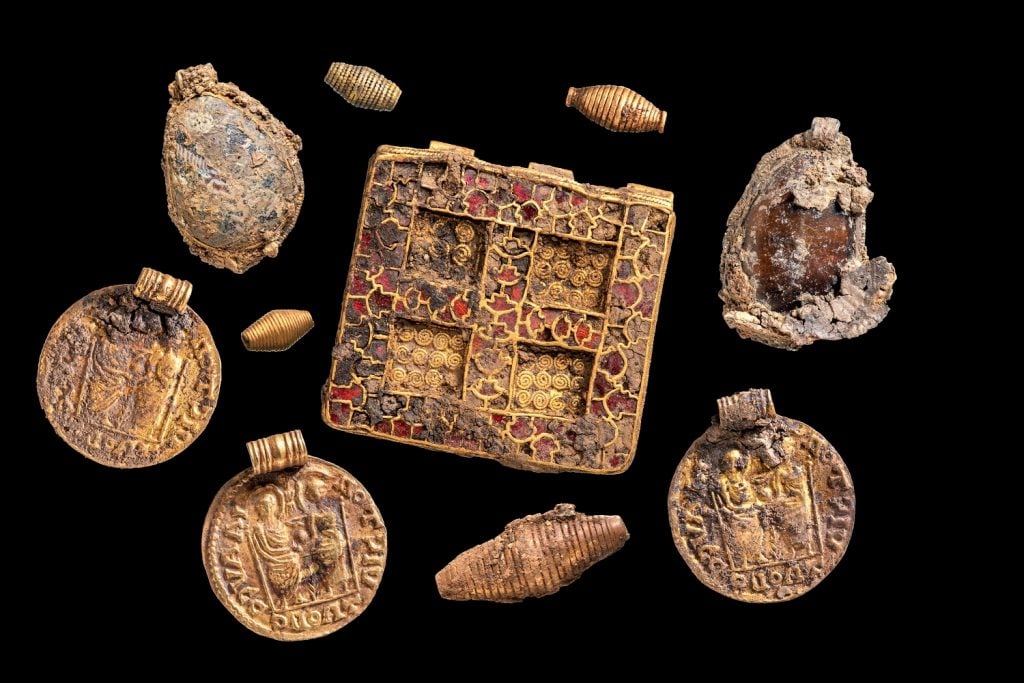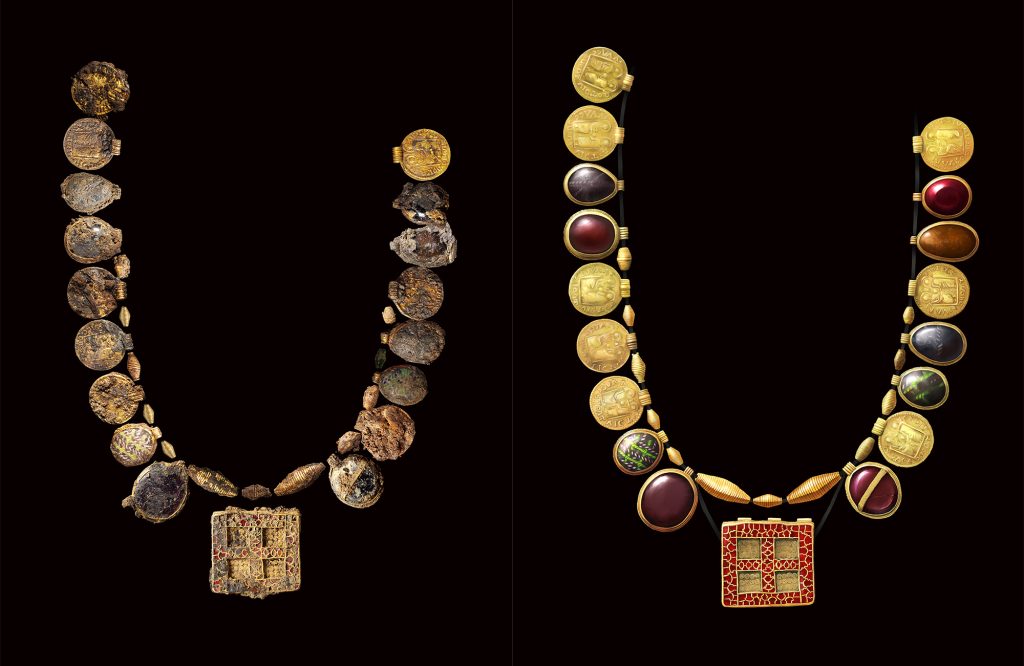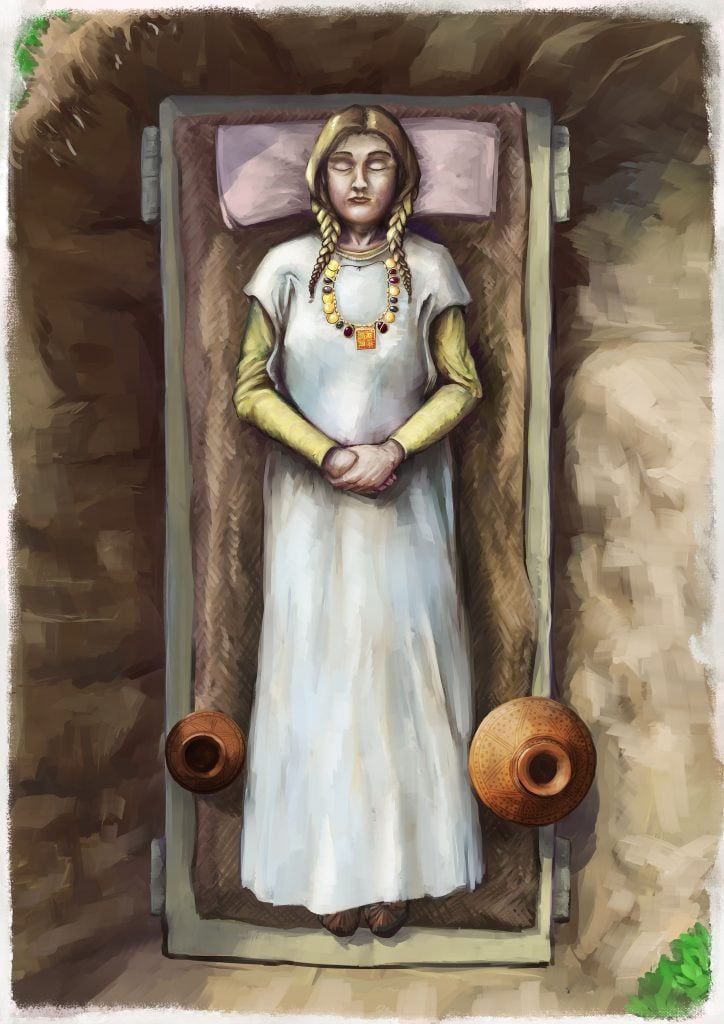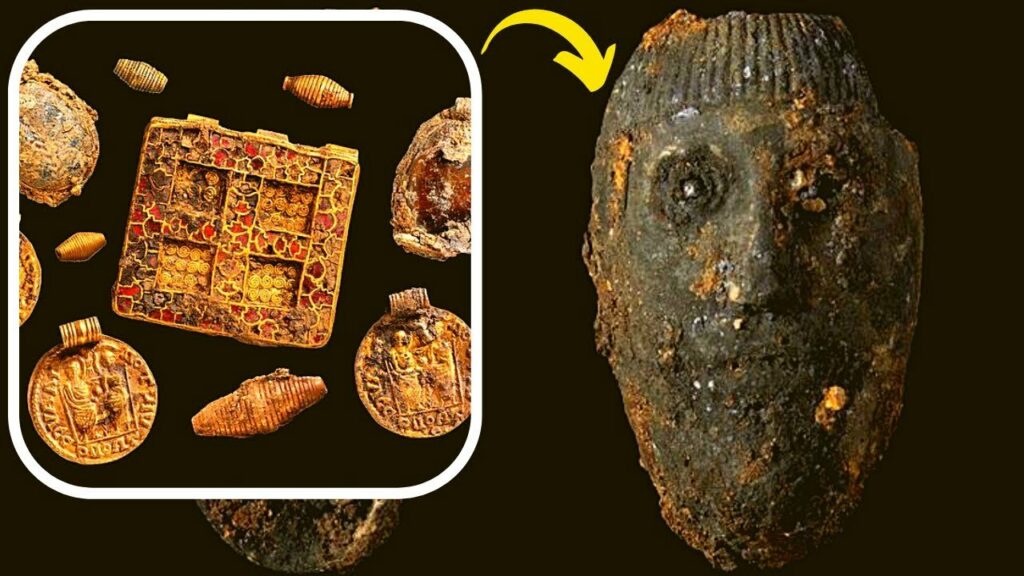In the picturesque rolling hills of Northamptonshire, England, an extraordinary find has emerged that promises to transform our comprehension of the early medieval era. An exquisite gold necklace, embellished with 30 pendants and beads made from gold Roman coins and semi-precious stones, has been uncovered at the burial site of a powerful woman interred over 1,300 years ago. This exceptional discovery, referred to as the “Harpole Treasure,” stands as a testament to the rich cultural and spiritual fabric that defined the region during a time of significant change.
The Harpole Treasure: A Window into History
Unearthed in the village of Harpole, the necklace exemplifies the remarkable artistry and skill that thrived in seventh-century England. The prominent rectangular pendant, adorned with a cross, suggests that the deceased may have held a role as an early Christian religious leader. The presence of precious metals and stones further signifies her elevated status and affluence, indicating the increasing prominence of women within this burgeoning faith.

Accompanying the stunning necklace was another notable artifact – an intricately designed silver cross, believed by scholars to have been placed on the woman’s chest during her burial. Together with clay pots originating from France or Belgium found alongside her, these artifacts vividly illustrate the cultural and religious milieu of the era.
The Importance of the Discovery
The revelation of the Harpole Treasure marks a significant milestone in the exploration of early medieval England. Lyn Blackmore, a specialist at the Museum of London Archaeology (MOLA), insightfully remarked, “She was extremely devout, but was she a princess? Was she a nun? Was she more than a nun—an abbess? We don’t know.” This enigma surrounding the woman’s identity adds layers of excitement and intrigue to this remarkable find.

Furthermore, the wealth and status associated with this burial challenge established narratives of the early medieval period. Traditionally, such opulent burials were predominantly reserved for men, suggesting that by the seventh century, women were beginning to attain considerable influence and recognition within the developing Christian faith. Simon Mortimer from Archaeological Consultants, RPS, who aided in the excavations, stated, “The scale of the wealth is going to change our view of the early medieval period in that area. This find has subtly shifted the course of history.”
The Conservation and Sharing of the Harpole Treasure
Currently, the Harpole Treasure is in the care of MOLA conservators, who are diligently analyzing these artifacts to uncover their mysteries. Their investigations could reveal insights into how these items were utilized during life or burial rituals and may even shed light on the identity of the woman herself.

Significantly, Vistry Group, the developer involved with the land where the treasure was found, has graciously relinquished any claims to it, ensuring that it will be donated to the nation and showcased in a local museum. This dedication to preserving and sharing cultural heritage exemplifies the value of collaboration between developers, archaeologists, and the community.
Additionally, the Harpole Treasure will be featured on an upcoming series of BBC Two’s “Digging for Britain,” set to premiere in early January 2023. This national exposure will introduce this remarkable find to a broader audience, igniting increased interest and appreciation for the rich history of early medieval England.
Conclusion
The discovery of the Harpole Treasure highlights the enduring capacity of archaeology to unveil hidden narratives from our past. This beautiful gold necklace, adorned with Roman coins and semi-precious stones, serves as a tangible connection to a period marked by significant cultural and religious evolution in England. While the identity of the woman interred with this treasure may remain shrouded in mystery, her legacy endures—prompting us to reconsider our understanding of the early medieval period and inspiring further exploration into the fascinating history of this remarkable region.

